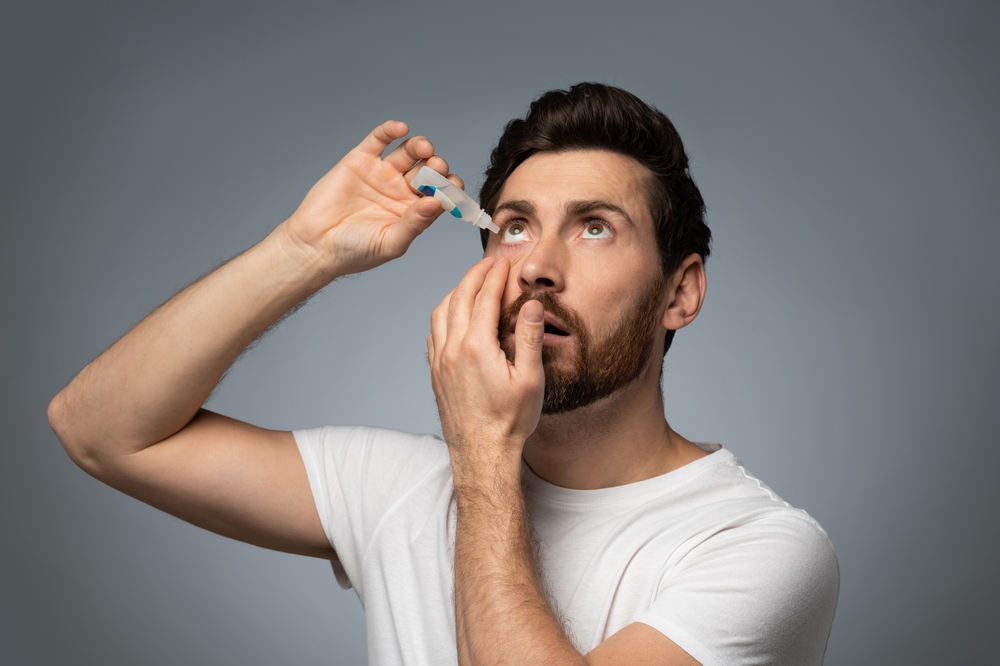
Dry eye is a common condition, often resulting from a chronic lack of sufficient lubrication and moisture on the surface of the eye. It may cause mild to severe discomfort, and can even lead to vision problems if left untreated. This condition affects millions of people worldwide, regardless of age or gender, and is increasingly becoming a public health issue.
Understanding dry eye is the first step towards seeking effective dry eye treatments. It's essential to understand the complexities of this condition before diving into the possible solutions. This understanding will provide a foundation for exploring the different treatment options available.
Causes and Symptoms of Dry Eye
There are several causes of dry eye, ranging from environmental factors to certain medical conditions. For instance, spending prolonged periods in air-conditioned or heated environments can cause dry eye. Likewise, the use of computers and digital screens for extended periods can lead to dry eye, due to reduced blink rate.
Medical conditions such as autoimmune diseases (e.g., Sjogren's syndrome, lupus), diabetes, thyroid disorders, and vitamin A deficiency may also contribute to dry eye. Additionally, certain medications, including antihistamines, decongestants, hormone replacement therapy, and antidepressants can cause dry eye symptoms.
The symptoms of dry eye can vary from person to person, but most commonly include persistent dryness, scratchiness, a burning sensation in the eye, sensitivity to light, redness, a feeling of something in the eye, and difficulty wearing contact lenses. In severe cases, dry eye can damage the front surface of the eye, impairing vision.
The Importance of Treating Dry Eye
Treating dry eye is not simply about alleviating discomfort - it's about preserving the health and functionality of your eyes. Untreated dry eye can lead to complications that may affect your vision and quality of life. For instance, severe dry eye can lead to eye inflammation, corneal abrasion (a painful scrape or scratch on the surface of your eye), corneal ulcer (an open sore on the cornea), and even vision loss in extreme cases.
Dry eyes can make it more difficult to perform certain activities such as reading, driving, and using a computer for extended periods. This can significantly impact your ability to work, study, or enjoy leisure activities.
Seeking prompt and effective dry eye treatments is crucial. It's not just about managing symptoms - it's about protecting your vision and ensuring your eyes remain healthy for the long term.
Common Dry Eye Treatments
There are various dry eye treatments available, ranging from simple lifestyle changes to medical procedures. The right treatment for you will depend on the severity of your dry eye and the underlying causes.
Basic dry eye treatments often involve changes to your environment and daily habits. For example, taking regular breaks from screen use, wearing sunglasses outdoors to protect your eyes from wind and sun, and increasing the humidity in your home or workplace can all help alleviate dry eye symptoms.
Over-the-counter eye drops, gels, and ointments, known as artificial tears, can also provide relief. These products supplement your natural tear production and help maintain a healthy tear film.
More advanced dry eye treatments may involve prescription medications that reduce inflammation or increase tear production, specialized contact lenses that protect the surface of your eyes, and minor surgical procedures to help manage tear production and drainage.
Exploring Different Dry Eye Treatments
When basic dry eye treatments are not enough, it's time to explore more advanced options. Prescription medications can effectively alleviate dry eye symptoms for many people. For example, anti-inflammatory drugs such as cyclosporine and lifitegrast can help reduce inflammation on the eye surface and increase tear production.
Another option is punctal plugs - tiny devices inserted into the tear ducts to block tear drainage. This can increase the tear film and surface moisture of the eyes. In severe cases, surgical procedures may be recommended to permanently close the tear ducts.
Newer treatments for dry eye are also becoming popular and highly effective, such as LipiFlow Thermal Pulsation and intense pulsed light therapy. Thermal pulsation is a treatment that helps to unblock oil glands. Intense pulsed light therapy uses light pulses to stimulate the production of tears.
When to Seek Professional Help for Dry Eye
If you're experiencing persistent dry eye symptoms that aren't responding to basic dry eye treatments, it's time to seek an eye care professional help. This is particularly important if you're experiencing severe symptoms, such as intense eye pain, heavy eyelids, a decline in vision, or if you have a history of eye surgery or a medical condition that puts you at higher risk for dry eye.
Seeing an eye care professional can help you get a definitive diagnosis and discuss more advanced dry eye treatments. They can perform a comprehensive eye exam, which may include tests to measure your tear production and assess the quality of your tears.
Living with Dry Eye
Living with dry eye can be challenging, but with the right knowledge and resources, it can be managed effectively. Understanding the causes and symptoms of dry eye is the first step. From there, exploring different dry eye treatments, whether it's lifestyle changes, over-the-counter remedies, prescription medications, or even surgical procedures, can help you find relief.
If you interested in exploring effective treatments for dry eye, visit Wilson Eyecare Professionals at our office in Greenfield, Indiana. Call (317) 477-3937 to discuss any questions with our team of experts or to schedule an appointment today.






